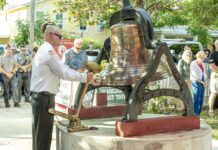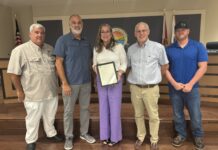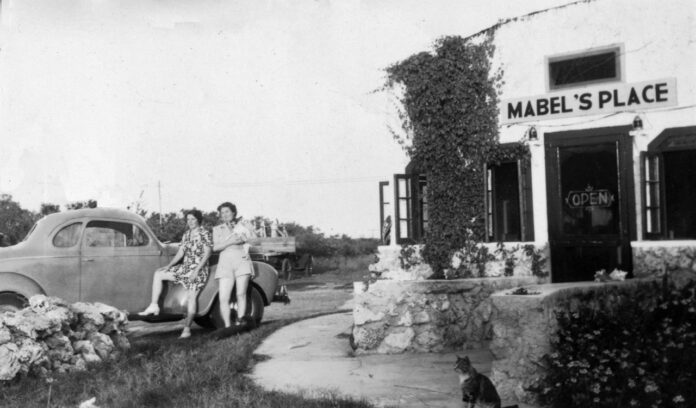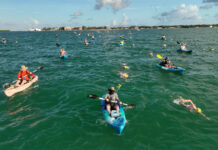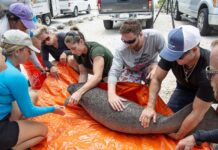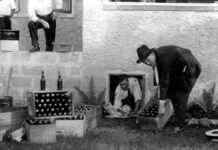The National Prohibition Act, also known as the Volstead Act, was named for Andrew J. Volstead, the Minnesota Republican and chairman of the House Judiciary Committee, who sponsored the legislation. It was written to provide a means to enforce the 18th Amendment prohibiting the manufacture, transport, export, sale, or possession of alcoholic beverages in the United States.
Passed by Congress on Oct. 28, 1919, the 18th Amendment was placed into effect on Jan. 16, 1920. It was repealed on Dec. 5, 1933.
During the years that booze was officially illegal in the United States, on the east coast, up and down the Atlantic demarcation of the jurisdictional limit of federal waters, hundreds of motherships anchored along an imaginary line from the Florida Keys to the New England states.
It became known as Rum Row. Stocked with liquor, the ships awaited captains willing to run out to international waters to conduct business and smuggle their loads back into the country. While most ships advertised their claim to offer the best deal, some ships enticed customers by offering parties and prostitutes.
The Prohibition years created a need for rumrunners, those men and women who took the chance of loading cases of contraband liquor into fast boats and making the run across federal waters, and to the mainland United States, trying to avoid getting caught.
Back on land, secret (and not so secret) drinking establishments around the country became known as speakeasies, drums, tea rooms and blind pigs. Rumrunning and the rumrunners attracted a larger criminal element. Even Al Capone operated in the Florida Keys — or at least he made the attempt.
According to a story told by Fern Butters, who, with her husband Captain Ed, operated a little motel and restaurant in North Key Largo called the Key Inn, Capone once made Ed an offer. As the story is told, one day in the late 1920s, an open-air roadster crossed the Card Sound Bridge, drove down State Road 4A and stopped at the roadside motel. The driver and a passenger occupied the vehicle. In some accounts, two machine guns — Tommy guns — were propped up in the backseat.
Fern watched as Ed walked up to the car. The associate, driving the car, opened the door and stepped out. He said, “This is Al Capone. We are going to pull into your dock with our loads, and we will give you $25 a load.”
Ed declined the offer.
The associate replied, “But this is Al Capone, and he is pulling into your dock.”
“I don’t care if he is the Lord Himself,” Ed said. “No one is pulling into my dock, and that’s final.”
When Ed turned and walked away, Fern thought she was about to watch her husband be shot to death. Instead, the man returned to the car, and he and Capone drove off down the bumpy dirt road. It seems likely that Ed Butters was not the only person propositioned that day and that someone else down the road agreed to Capone’s terms.
Had Capone rolled into the roadside motel a couple of years later, he probably would have received an “absolutely.” Circa 1931, the Butters sold to Mabel Harris of Chicago. She changed the name to Mabel’s Place and still offered motel rooms and a restaurant, but also booze, games of chance, and prostitution.
Capone and Mabel did not represent the only criminal element working to take advantage of the environment that Prohibition created. Relatively few things go unnoticed on an island and the waters surrounding them. Wherever booze was smuggled aboard ships, liquor pirates lurked in the shadows. Who were the liquor pirates? These sailors preyed upon the rumrunners working to get their stash delivered to dry land.
To avoid detection, rumrunners making the trek back from Cuba or the Bahamas to the Florida Keys raced to the ragged, mangrove-lined islands with their lights off and throttles wide open. Should the government vessels get too close, the local rumrunners, who knew every nook and cranny of the island chain, would take note of their location and dump their contraband into the shallows, in a cove, or on some convenient island before speeding away.
Once the coast was clear, they would make their way back to the dump site to recover their booze. However, sometimes, it was no longer where they left it. There were people on shore who hid in the shadows, as well as those who lurked in skiffs close to shore, hoping to spy an illicit load being prematurely dumped. These liquor pirates would sneak up and retrieve the contraband from the shallows and slip away before anyone was the wiser, an act that left the rumrunners empty-handed for all of their efforts.
Of course, transporting the booze was just the first step in the process. There were also the speakeasies, tea rooms and blind pigs that sold it. They took risks, too. Fortunately for those operators in the Keys, the island chain remained a relatively isolated string of islands for most of the Prohibition years. Only in late 1927 was the first road “connecting” the mainland to Key West opened to public transit.
From 1920 to 1927, agents arrived in the Keys via boat or the Key West Extension of Henry Flagler’s Over-Sea Railway. When traveling aboard the train, it was not unusual for operators on the mainland to pass the word down the coconut telegraph that the feds were en route. However, we will have to wait until next week to talk more about that.





